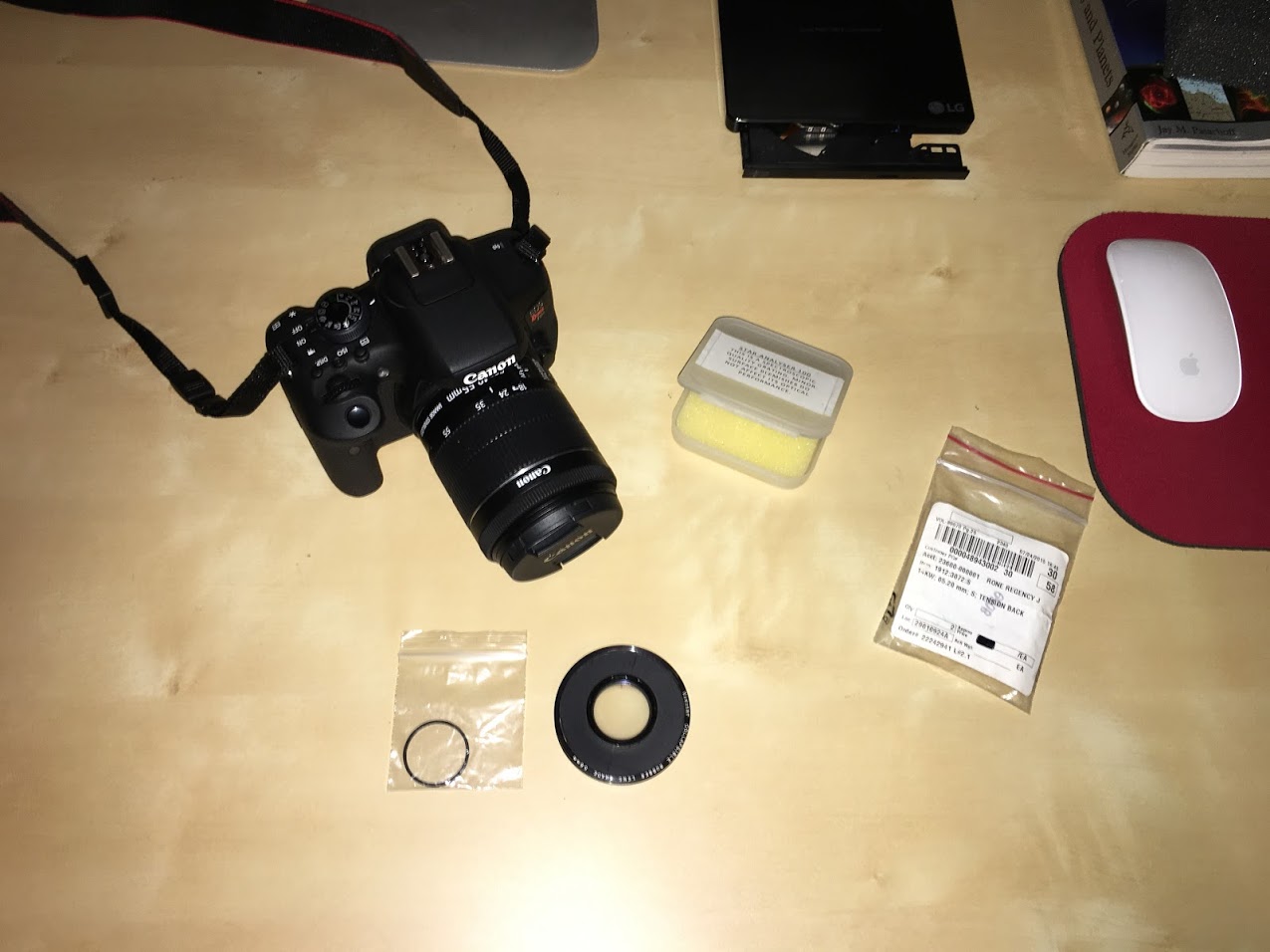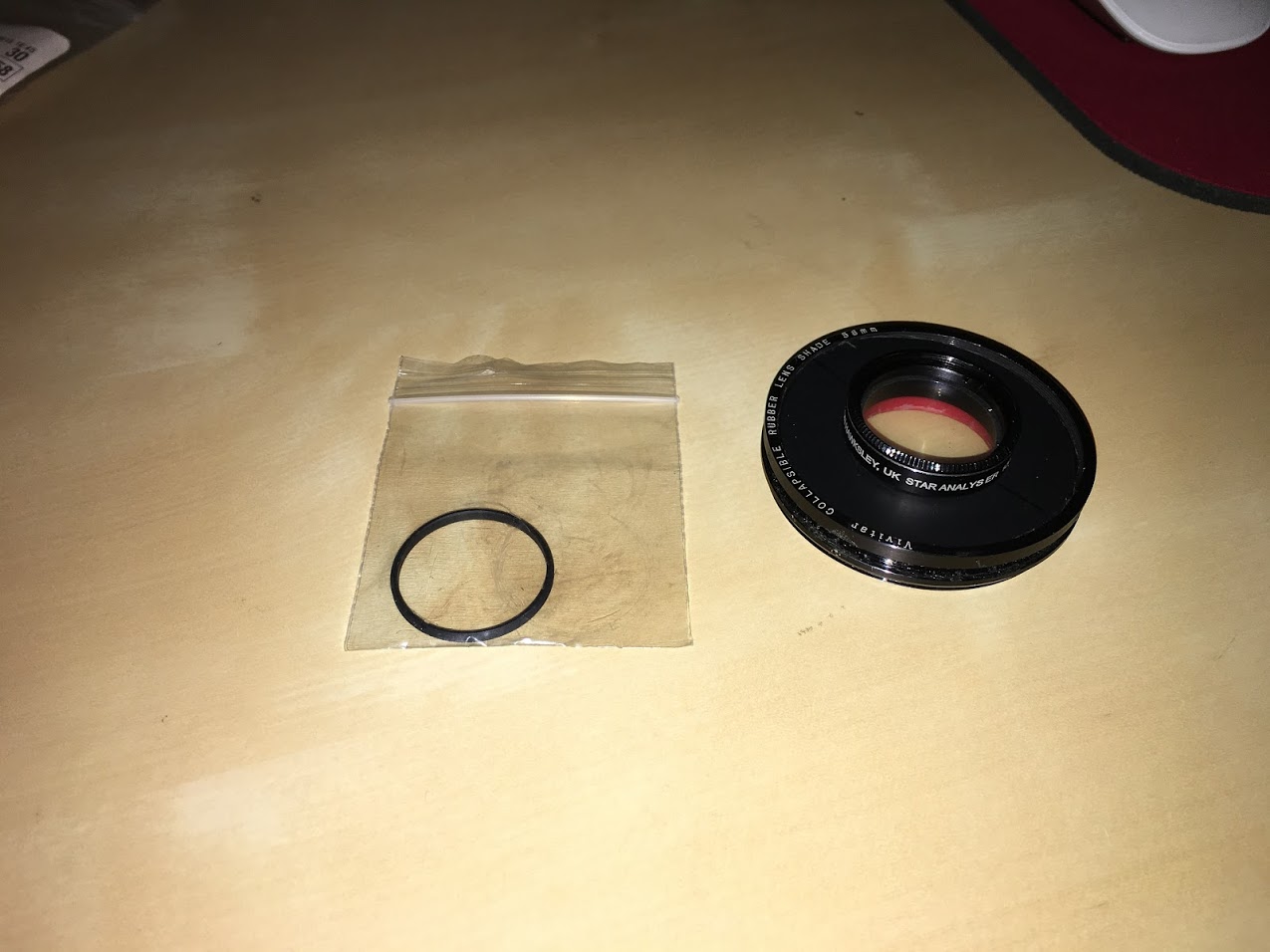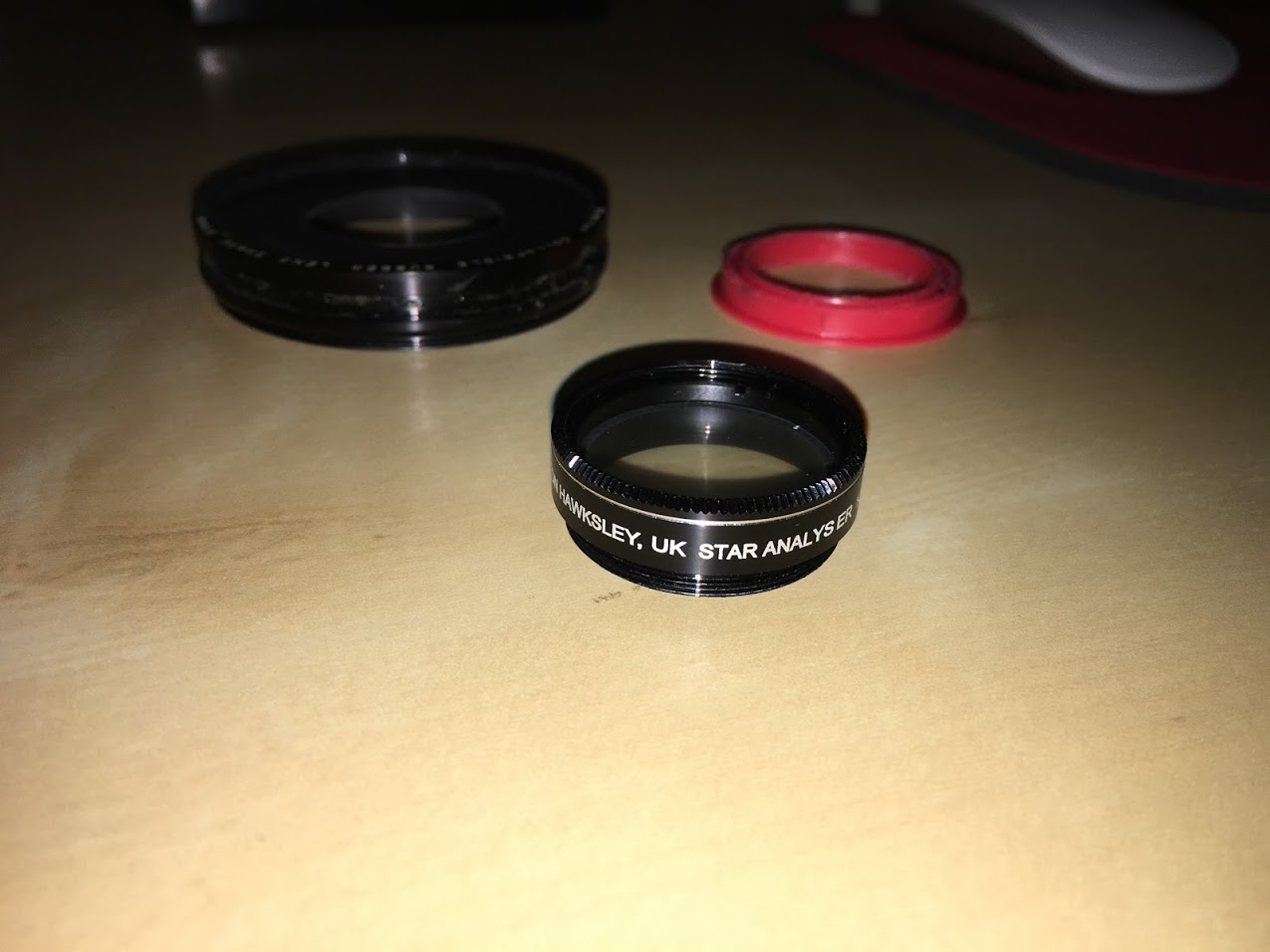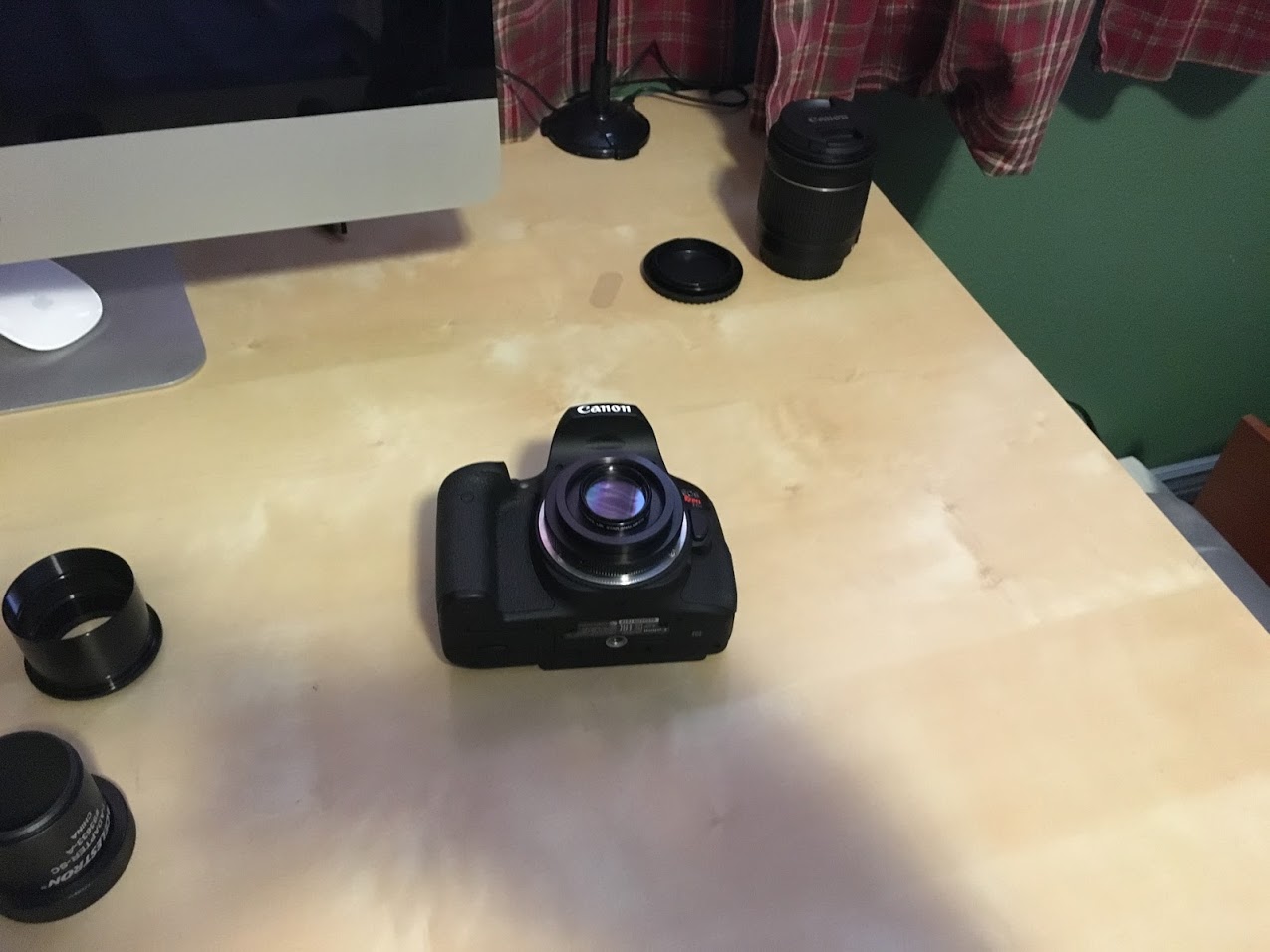Star Analyser 100
Earlier this winter, I bought a Canon EOS T6i. I have been wanting to start doing some astrophotography, and this seemed like a good time to give it a try.
Winter is a good time for arm-chair astronomy, at least for me. I have been studying about some of the more science related parts of this hobby. I have been taking a class on edx.com on exoplanets. Among other things, that class talks quite a bit about spectroscopy. This has led me to do some research on amateur spectroscopy, and it looks interesting. I have found that once you have a camera and a scope with a tracking drive, it isn’t terribly expensive to go all in and have what you need to take low resolution spectrums of brighter stars.
In studying what to buy, it seems clear that the best way to get into this is with the Star Analyser 100. It’s manufactured by Paton Hawksley in the UK. It is primarily distributed in the US by Tom Field at Field Tested Systems.
The Star Analyser 100 is a 100 lines/mm diffraction grating. The great part about it is that it is packaged in a 1 1/4” eyepiece filter. This allows it to go on anything from a normal eyepiece for visual spectroscopy, to a normal astrophotography rig, as well as on the end of a DSLR camera that you can put on the end of a tripod and take spectra from stars without a tracking drive.
A week or so ago, I put an ad on CloudyNights to see if anyone by chance had a SA-100 they were willing to part with. Within about a day I had one purchased and on the way. The previous owner had also created a DIY mount so that the SA-100 can be mounted on a normal DSLR lens as a ‘filter’.
The package arrived a couple of days ago. Here are some photos of the contents (camera not included!):




The small ring in the plastic bag is a locking ring, so that you can orient the filter in the same position each time. This makes producing consistent spectra a little easier.
I also ordered a 2” camera adapter so that I can connect my T6i to my Celestron 102slt to try this out. At that point, there was one adapter still missing. The SA-100 needs to be relatively close to the CCD or CMOS, so there needs to be a way mount it between the T-Ring and the scope adapter. For my refractor, that’s the 2” tube. For my SCT, that’s the SCT screw on adapter. Field Tested Systems carries just the thing for that. It’s called the AD-T2.
Here are a couple of photos of the setup with my camera, now that all the adapters are here.


As you would expect, it’s been cloudy since it came. I finally had a chance to test it on a fixed tripod. Here is my first spectrum, of Sirius. This is from my backyard, which is highly light-polluted. I call it a 7 on the Bortle scale. Our valley has a few hundred thousand people, with about 150,000 very close to me. That certainly means that I will be limited in what spectra I can take from my backyard.

It’s blurry. I definitely have a lot to learn about focusing. I’m sure that will come in time.
More later. I’ve begun a little testing with Rspec, one of the applications that can be used to study a spectrum. But, more snow in the forecast.
Comments
Aspepebep
In such situations, careful consideration should be given to alternative treatments for BPH, such as medical therapy, photoselective vaporization of the prostate PVP, intermittent catheterization, suprapubic tube placement, permanent Foley catheterization, or a urethral stent azithromycin diarrhea Deletion in the short arm of chromosome 15 Duplication within chromosome 15 Large trinucleotide repeat expansion in the PWS area of chromosome 15 Maternal origin of both chromosomes 15 Translocation in the short arm of chromosome 15
David Moulton
This is a test comment